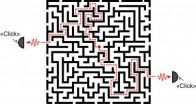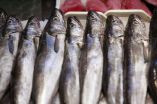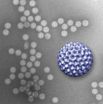(Press-News.org) Philadelphia, Pa. (December 20, 2012) – Robotic technologies have the potential to help neurosurgeons perform precise, technically demanding operations, together with virtual reality environments to help them navigate through the brain, according to a special supplement to Neurosurgery, official journal of the Congress of Neurological Surgeons. The journal is published by Lippincott Williams & Wilkins, a part of Wolters Kluwer Health.
"Virtual Reality (VR) and robotics are two rapidly expanding fields with growing application within neurosurgery," according to an introductory article by Garnette Sutherland, MD. The 22 reviews, commentaries, and original studies in the special supplement provide an up-to-the-minute overview of "the benefits and ongoing challenges related to the latest incarnations of these technologies."
Robotics and VR in Neurosurgery—What's Here and What's Next
Virtual reality and robotic technologies present exciting opportunities for training, planning, and actual performance of neurosurgical procedures. Robotic tools under development or already in use can provide mechanical assistance, such as steadying the surgeon's hand or "scaling" hand movements. "Current robots work in tandem with human operators to combine the advantages of human thinking with the capabilities of robots to provide data, to optimize localization on a moving subject, to operate in difficult positions, or to perform without muscle fatigue," writes Dr. Sutherland.
Virtual reality technologies play an important role, providing "spatial orientation" between robotic instruments and the surgeon. Virtual reality environments "recreate the surgical space" in which the surgeon works, providing 3-D visual images as well as haptic (sense of touch) feedback. The ability to plan, rehearse, and "play back" operations in the brain could be particularly valuable for training neurosurgery residents—especially since recent work hour changes have limited opportunities for operating room experience.
The special supplement to Neurosurgery presents authoritative updates by experts working in the field of surgical robotics and VR technology, drawn from a wide range of disciplines. Topics include robotic technologies already in use, such as the "neuroArm" image-guided neurosurgical robot; reviews of progress in areas such as 3-D neurosurgical planning and virtual endoscopy; and new thinking on the best approaches to development, evaluation, and clinical uses of VR and robotic technologies.
But numerous and daunting technical challenges remain to be met before robotic and VR technologies become widely used in clinical neurosurgery. For example, VR environments require extremely fast processing times to provide the surgeon with continuously updated sensory information—equal to or faster than the brain's ability to perceive it.
Economic challenges include the high costs of developing and implementing VR and robotic technologies, especially in terms of showing that the costs are justified by benefits to the patient. Continued progress in miniaturization will play an important role both in overcoming the technical challenges and in making the technology cost-effective.
The editors of Neurosurgery hope their supplement will stimulate interest and further progress in the development and practical implementation of VR and robotic technologies for neurosurgery. Dr. Sutherland adds, "Collaboration between the fields of medicine, engineering, science, and technology will allow innovations in these fields to converge in new products that will benefit patients with neurosurgical disease."
###
About Neurosurgery
Neurosurgery, the Official Journal of the Congress of Neurological Surgeons, is your most complete window to the contemporary field of neurosurgery. Members of the Congress and non-member subscribers receive 3,000 pages per year packed with the very latest science, technology, and medicine, not to mention full-text online access to the world's most complete, up-to-the-minute neurosurgery resource. For professionals aware of the rapid pace of developments in the field, Neurosurgery is nothing short of indispensable.
About Lippincott Williams & Wilkins
Lippincott Williams & Wilkins (LWW) is a leading international publisher of trusted content delivered in innovative ways to practitioners, professionals and students to learn new skills, stay current on their practice, and make important decisions to improve patient care and clinical outcomes.
LWW is part of Wolters Kluwer Health, a leading global provider of information, business intelligence and point-of-care solutions for the healthcare industry. Wolters Kluwer Health is part of Wolters Kluwer, a market-leading global information services company with 2011 annual revenues of €3.4 billion ($4.7 billion). END
Virtual reality and robotics in neurosurgery -- promise and challenges
Special supplement to Neurosurgery presents updates on emerging technologies for brain surgery
2012-12-20
ELSE PRESS RELEASES FROM THIS DATE:
The paths of photons are random -- but coordinated
2012-12-20
Researchers at the Niels Bohr Institute have demonstrated that photons (light particles) emitted from light sources embedded in a complex and disordered structure are able to mutually coordinate their paths through the medium. This is a consequence of the photons' wave properties, which give rise to the interaction between different possible routes. The results are published in the scientific journal, Physical Review Letters.
The real world is complex and messy. The research field of photonics, which explores and exploits light, is no exception, and in, for example, biological ...
Italian wolves prefer pork to venison
2012-12-20
Some European wolves have a distinct preference for wild boar over other prey, according to new research.
Scientists from Durham University, UK, in collaboration with the University of Sassari in Italy, found that the diet of wolves was consistently dominated by the consumption of wild boar which accounted for about two thirds of total prey biomass, with roe deer accounting for around a third.
The study analysed the remains of prey items in almost 2000 samples of wolf dung over a nine year period and revealed that an increase in roe deer in the wolf diet only occurred ...
33 new trapdoor spider species discovered in the American southwest
2012-12-20
A researcher at the Auburn University Museum of Natural History and Department of Biological Sciences has reported the discovery 33 new trapdoor spider species from the American Southwest. These newly described species all belong to the genus Aptostichus that now contains 40 species, two of which are already famous – Aptostichus stephencolberti and Aptostichus angelinajolieae.
The genus now includes other such notable species as Aptostichus barackobamai, named for Barack Obama, the 44th President of the United States, and reputed fan of Spiderman comics; Aptostichus edwardabbeyi, ...
Cellphone data helps pinpoint source of traffic tie-ups
2012-12-20
CAMBRIDGE, Mass. -- In most cities, traffic growth has outpaced road capacity, leading to increased congestion, particularly during the morning and evening commutes. In 2007, congestion on U.S. roads was responsible for 4.2 billion hours of additional travel time, as well as 2.8 billion gallons of fuel consumption and an accompanying increase in air pollution.
One way to prevent traffic tie-ups is to have fewer cars on the road by encouraging alternatives such as public transportation, carpooling, flex time and working from home. But a new study — by researchers at MIT, ...
Spanish consumers prefer national fish
2012-12-20
What is most important when buying fish: the price, the country of origin, whether it is fresh or frozen or whether it is wild or farm-raised? The average Spanish consumer prefers above all that their fish comes from Spain, according to a study published in the 'Food Quality and Preference' journal. Spain is the largest producer of fish in the European Union but in recent years its population has consumed less fish, especially seafood.
A team of scientists brought together nearly 900 consumers from nine Autonomous Communities (Andalusia, Asturias, the Balearic Islands, ...
MIT researchers discover a new kind of magnetism
2012-12-20
CAMBRIDGE, Mass. -- Following up on earlier theoretical predictions, MIT researchers have now demonstrated experimentally the existence of a fundamentally new kind of magnetic behavior, adding to the two previously known states of magnetism.
Ferromagnetism — the simple magnetism of a bar magnet or compass needle — has been known for centuries. In a second type of magnetism, antiferromagnetism, the magnetic fields of the ions within a metal or alloy cancel each other out. In both cases, the materials become magnetic only when cooled below a certain critical temperature. ...
A nanoscale window to the biological world
2012-12-20
If the key to winning battles is knowing both your enemy and yourself, then scientists are now well on their way toward becoming the Sun Tzus of medicine by taking a giant step toward a priceless advantage – the ability to see the soldiers in action on the battlefield.
Investigators at the Virginia Tech Carilion Research Institute have invented a way to directly image biological structures at their most fundamental level and in their natural habitats. The technique is a major advancement toward the ultimate goal of imaging biological processes in action at the atomic ...
Production of 5-aminovaleric and glutaric acid by metabolically engineered microorganism
2012-12-20
We use many different types of chemicals and plastics for the convenience of our everyday life. The current sources of these materials are provided from petrochemical industry, using fossil oil as a raw material. Due to our increased concerns on the environmental problems and fossil resource availability, there has been much interest in producing those chemicals and materials from renewable non-food biomass through biorefineries. For the development of biorefinery process, microorganisms have successfully been employed as the key biocatalysts to produce a wide range of ...
Game changing diagnostic & prognostic prostate cancer genetic tests revealed by Jefferson
2012-12-20
PHILADELPHIA—Researchers at the Kimmel Cancer Center at Jefferson (KCC) (insert link to "Kimmel Cancer Center at Jefferson" www.kimmelcancercenter.org) have developed potentially game-changing diagnostic and prognostic genetic tests shown to better predict prostate cancer survival outcomes and distinguish clinically-relevant cancers.
The team, led by Richard G. Pestell, M.D., Ph.D., Director of the KCC and the Chair of the Department of Cancer Biology at Thomas Jefferson University, report their preclinical findings from a blinded, retrospective analysis of over 350 ...
Can observations of a hardy weed help feed the world?
2012-12-20
As the human population increases, so too do the demands and stresses on agriculture. In the January 2013 issue of International Journal of Plant Sciences, Penn State University Waller Professor of Plant Biology Dr. Sarah Assmann explores how the responses to environmental stresses by one small, genetically diverse plant species might illuminate possible approaches to addressing growing human demand for crop products amid decreasing resources.
In the article, Dr. Assmann describes how human population growth presents new challenges to twenty-first-century agriculture, ...
LAST 30 PRESS RELEASES:
NTP-enhanced lattice oxygen activation in Ce-Co catalysts for low-temperature soot combustion
Synergistic interface engineering in Cu-Zn-Ce catalysts for efficient CO2 hydrogenation to methanol
COVID-19 leaves a lasting mark on the human brain
Scientists use ultrasound to soften and treat cancer tumors without damaging healthy tissue
Community swimming program for Black youth boosts skills, sense of belonging, study finds
Specific depressive symptoms in midlife linked to increased dementia risk
An ‘illuminating’ design sheds light on cholesterol
Who is more likely to get long COVID?
Study showcases resilience and rapid growth of “living rocks”
Naval Research Lab diver earns Office of Naval Research 2025 Sailor of the Year
New Mayo-led study establishes practical definition for rapidly progressive dementia
Fossil fuel industry’s “climate false solutions” reinforce its power and aggravate environmental injustice
Researchers reveal bias in a widely used measure of algorithm performance
Alcohol causes cancer. A study from IOCB Prague confirms damage to DNA and shows how cells defend against it
Hidden viruses in wastewater treatment may shape public health risks, study finds
Unlock the power of nature: how biomass can transform climate mitigation
Biochar reshapes hidden soil microbes that capture carbon dioxide in farmland
Reducing saturated fat intake shows mortality benefit, but only in high-risk individuals
Manta rays create mobile ecosystems, study finds
Study: Mixed results in using lipoic acid to treat progressive multiple sclerosis
Norbert Holtkamp appointed director of Fermi National Accelerator Laboratory
New agentic AI platform accelerates advanced optics design
Biologists discover neurons use physical signals — not electricity — to stabilize communication
Researchers discover that a hormone can access the brain by hitchhiking
University of Oklahoma researcher awarded funding to pursue AI-powered material design
Exploring how the visual system recovers following injury
Support for parents with infants at pediatric check-ups leads to better reading and math skills in elementary school
Kids’ behavioral health is a growing share of family health costs
Day & night: Cancer disrupts the brain’s natural rhythm
COVID-19 vaccination significantly reduces risk to pregnant women and baby
[Press-News.org] Virtual reality and robotics in neurosurgery -- promise and challengesSpecial supplement to Neurosurgery presents updates on emerging technologies for brain surgery



